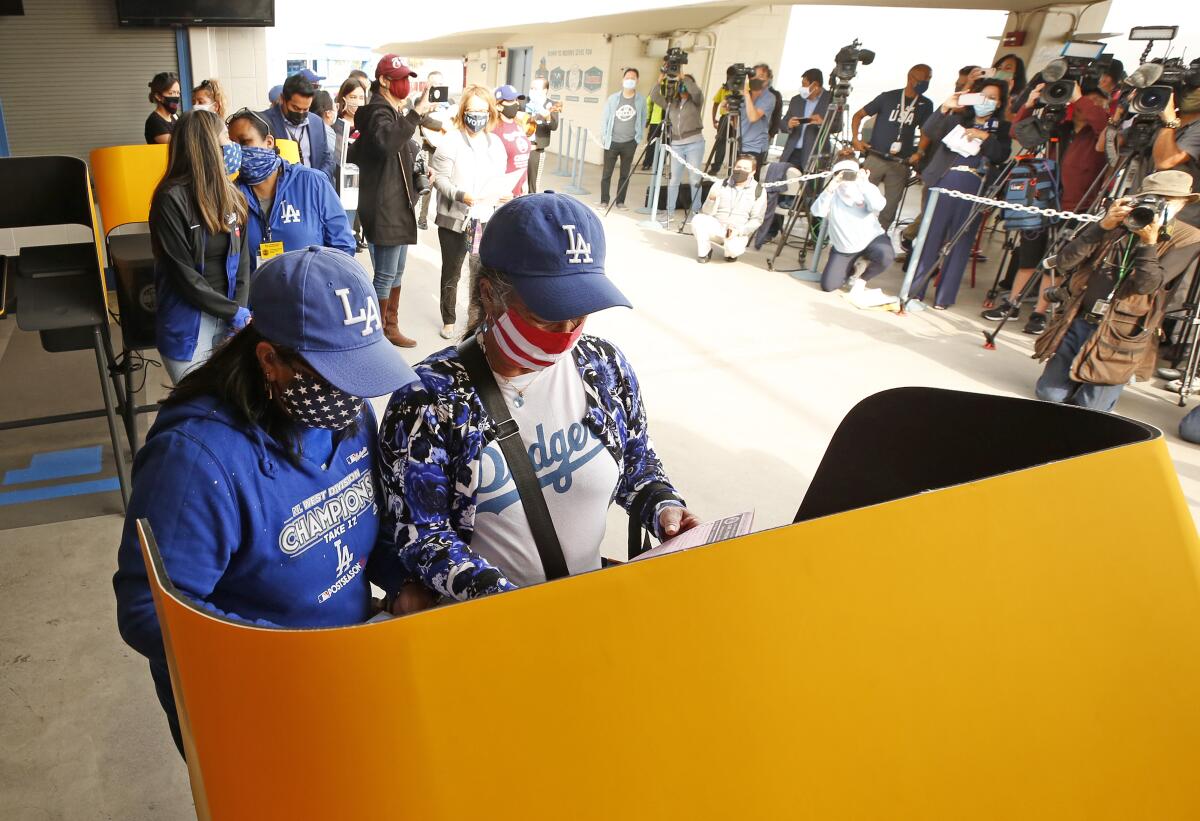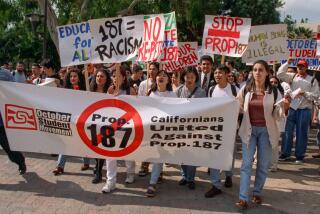Democrats should seize this recall as a practice round for the midterms

- Share via
The September election to recall California’s governor started as a political distraction, but it doesn’t have to be pointless. This round of voting is an opportunity for Democrats to build lasting relationships with the state’s nonwhite electorate — and to shape a generation of progressive politics for the state and the nation.
It’s no secret that the path to victory for Gov. Gavin Newsom runs through the state’s diverse electorate. At the UCLA Latino Policy and Politics Initiative, our research indicates that in the 20 years leading up to the 2022 midterm elections, there will have been a 126% increase of Latino registered voters and a 94% increase of Asian American voters. They are more likely than white voters to be undecided about the recall election based on their approval of Newsom, and these constituencies are where he and his supporters should focus their attention and campaign resources.
It’s hard enough to get many potential voters to pay attention and cast their ballots in midterm years, when the presidency is not on the ballot. California’s recall, falling outside even the midterm rhythm, is an opportunity to build and maintain engagement.
Making the right investments in outreach over the next two months will pay dividends beyond September. The stakes in the 2022 midterms will be high for Democrats in California and the nation, including congressional seats in Republican strongholds in the Central Valley and Orange and Los Angeles counties that polling shows are gettable for either party. These California seats are essential to keeping the House blue.
The state’s Democratic Party may not have taken this recall election very seriously yet when it comes to engaging voters of color, but leaders know they can’t afford to shrug off the midterms. This is their wake-up call: The party must invest immediately in awareness campaigns and get-out-the-vote efforts for the recall election.
California should be the national model for effective engagement of communities of color, but we can learn from other states as well. What turned Georgia and Arizona blue during the 2020 election? On-the-ground outreach from trusted messengers. Hitting the pavement to register voters. Communicating the political stakes.
Between now and September, California Democrats need to emulate these states’ effective field campaigns to keep Newsom in the Horseshoe. That means door-knocking in targeted districts, collaborations with civil society organizations that have deep connections to local communities, and focused ads that target digital and ethnic media environments where diverse voters spend time.
Other states offer more lessons on how to appeal to voters of color. Both Republican and Democratic parties in Arizona, New Mexico and Florida have put Latino candidates on the ballot for top-tier races, helping voters see themselves reflected in political leadership.
By contrast, in California’s 2003 gubernatorial recall election, the party bypassed Lt. Gov. Cruz Bustamante as a write-in Democratic option. Since that time, in a state where Latinos represent a plurality, few have held top offices — among them former Atty. Gen. Xavier Becerra and recently appointed Sen. Alex Padilla. California has never elected a Latina to statewide constitutional office, and the governor’s mansion has only ever been occupied by white men.
California must get serious about developing a pipeline of political leadership that represents the state’s diverse communities. Latinos and Asian Americans are fast-growing demographics that are young, active on social media, and eager for a chance to shape a thriving California. It is no coincidence that the seven congressional districts in Orange and Los Angeles counties that flipped to Democrats in the 2018 midterm elections are places where Latinos and Asian Americans are a critical swing vote. An easy way to build engagement is to support diverse and dynamic candidates who can drive excitement and bring people to the polls.
Most pressingly, the California Democratic Party has a responsibility to engage enough Newsom supporters to vote “no” in September, keeping him in office. The larger agenda is to reverse a history of willful neglect of voters of color. If successfully engaged in the state’s political process, those voters will support future candidates committed to inclusive and progressive policies to help all Californians.
Sonja Diaz is the founding director of the UCLA Latino Policy and Politics Initiative, a research think tank.
More to Read
A cure for the common opinion
Get thought-provoking perspectives with our weekly newsletter.
You may occasionally receive promotional content from the Los Angeles Times.









